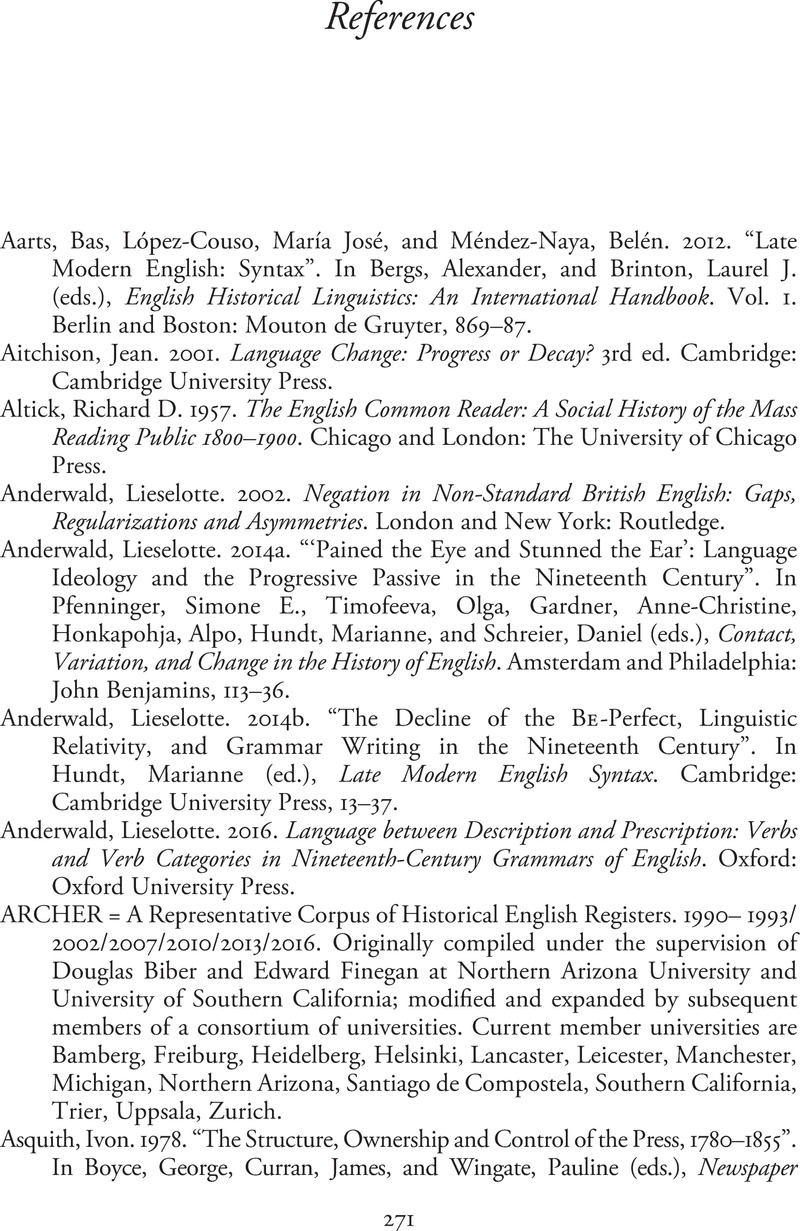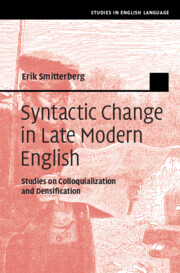Book contents
- Syntactic Change in Late Modern English
- Studies In English Language
- Syntactic Change in Late Modern English
- Copyright page
- Contents
- Figures
- Tables
- Acknowledgements
- Chapter 1 Introduction
- Chapter 2 Sociocultural and Linguistic Change in Late Modern English
- Chapter 3 Aspects of Language Change
- Chapter 4 Methodological Framework
- Chapter 5 Colloquialization I: Not-Contraction
- Chapter 6 Colloquialization II: Co-ordination by And
- Chapter 7 Densification I: Nouns as Premodifiers in Noun Phrases
- Chapter 8 Densification II: Participle Clauses as Postmodifiers in Noun Phrases
- Chapter 9 Concluding Discussion
- Appendix
- References
- Index
- References
References
Published online by Cambridge University Press: 19 November 2021
- Syntactic Change in Late Modern English
- Studies In English Language
- Syntactic Change in Late Modern English
- Copyright page
- Contents
- Figures
- Tables
- Acknowledgements
- Chapter 1 Introduction
- Chapter 2 Sociocultural and Linguistic Change in Late Modern English
- Chapter 3 Aspects of Language Change
- Chapter 4 Methodological Framework
- Chapter 5 Colloquialization I: Not-Contraction
- Chapter 6 Colloquialization II: Co-ordination by And
- Chapter 7 Densification I: Nouns as Premodifiers in Noun Phrases
- Chapter 8 Densification II: Participle Clauses as Postmodifiers in Noun Phrases
- Chapter 9 Concluding Discussion
- Appendix
- References
- Index
- References
Summary

- Type
- Chapter
- Information
- Syntactic Change in Late Modern EnglishStudies on Colloquialization and Densification, pp. 271 - 298Publisher: Cambridge University PressPrint publication year: 2021

